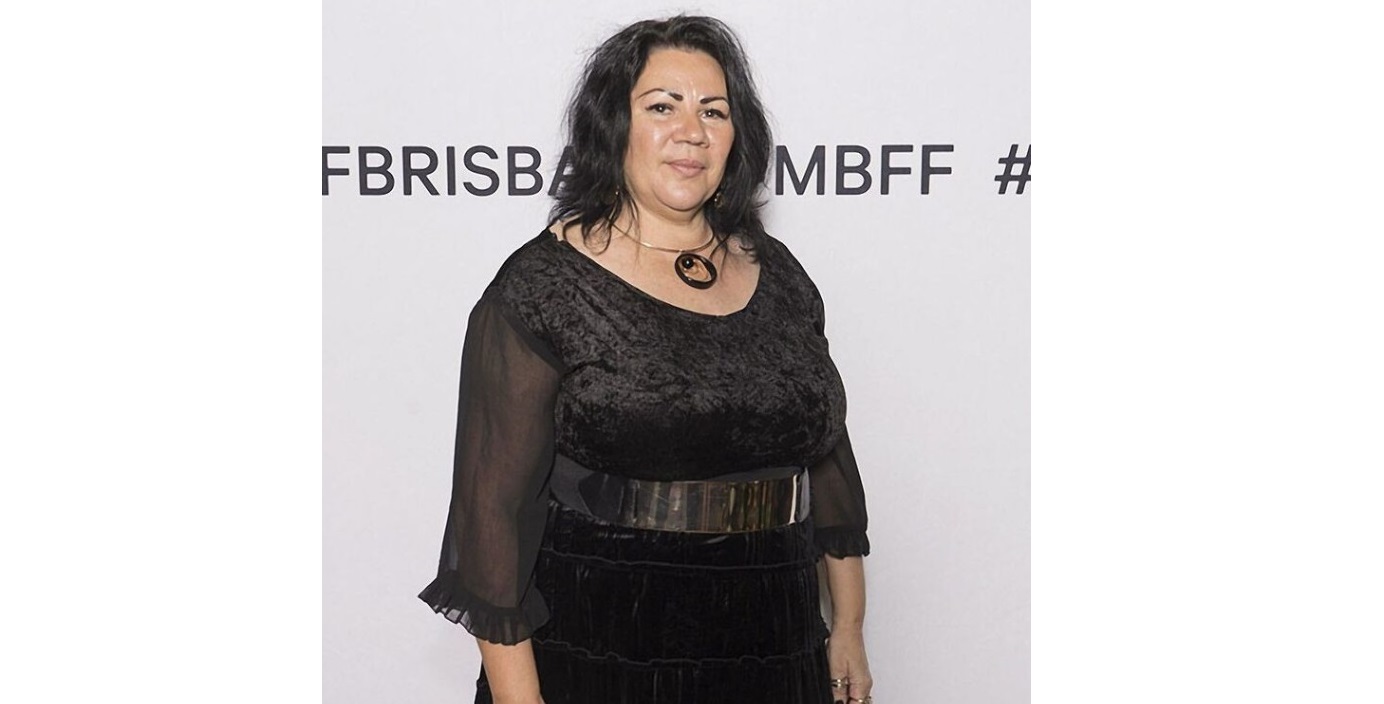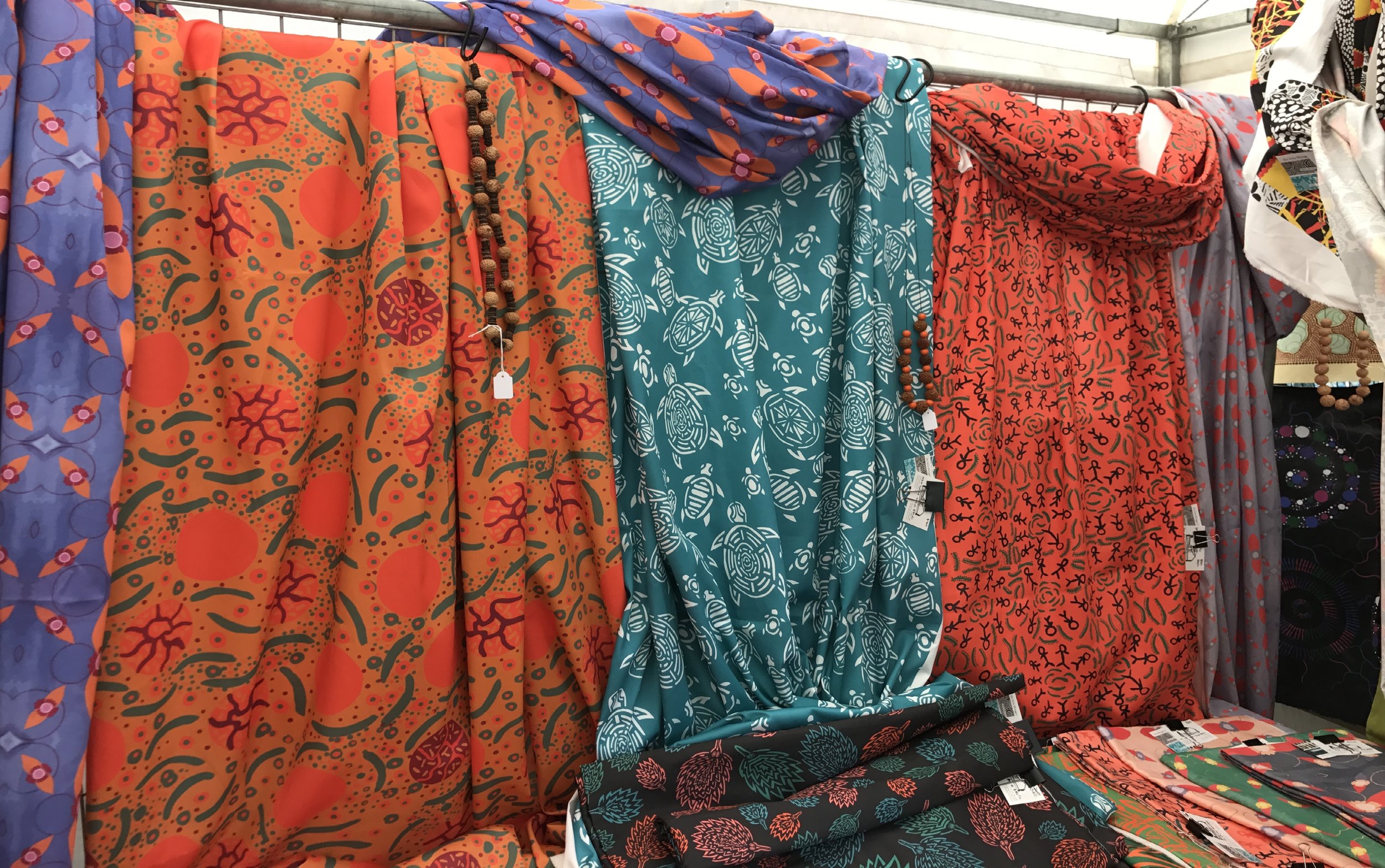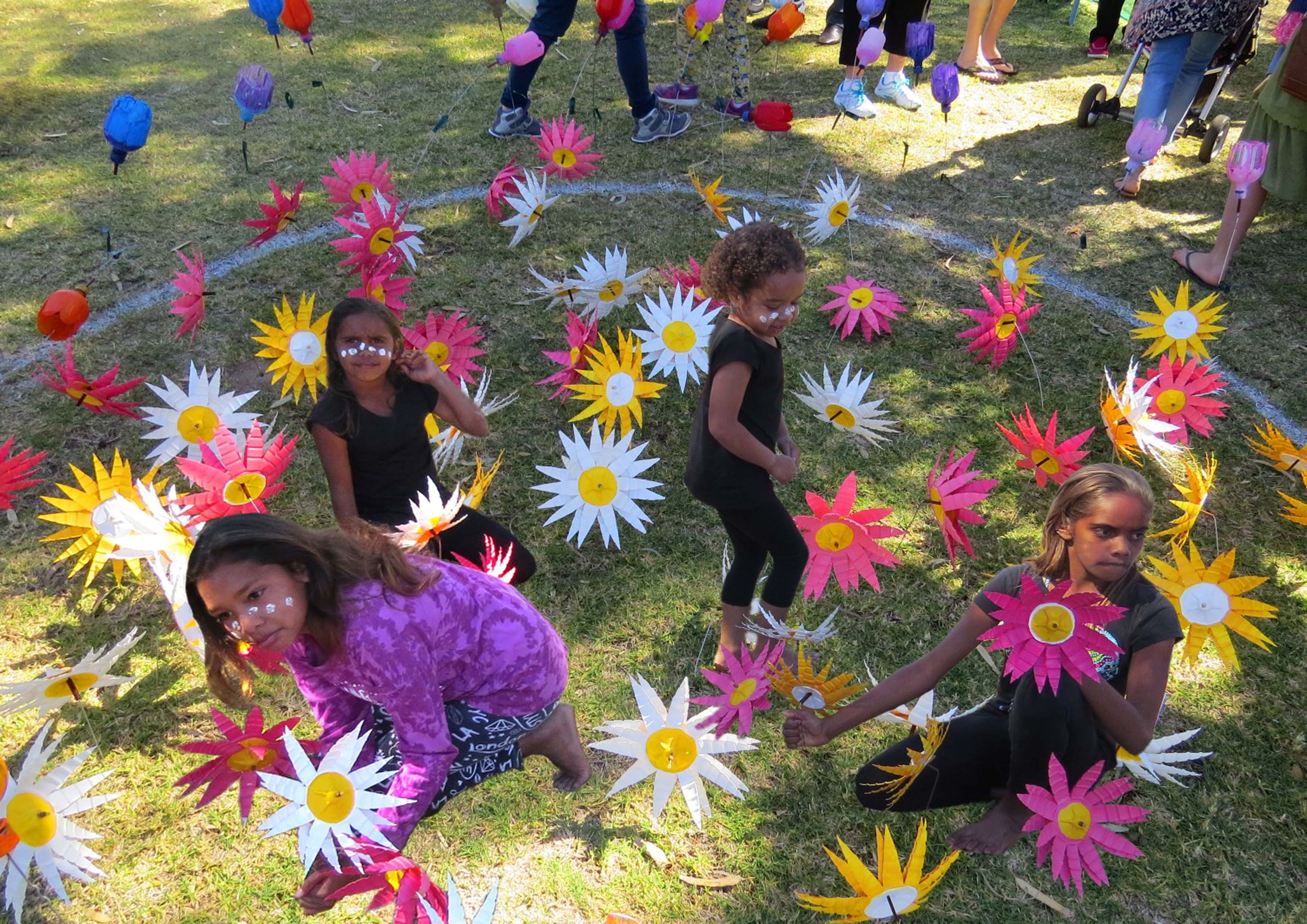Images Courtesy of Mercedes-Benz Fashion Festival Brisbane Aug. 2018
What drew you to become a fashion designer?
I'd been modelling for an Indigenous fashion show called "RIFTS" (Regional Indigenous Fashion & Textile Show) an annual event in Cairns managed by Dawul Wuru Fashion Show (an Aboriginal Organization in Cairns). In 2016 the the manager of RIFTS offered an opportunity to those interested, the chance to put a collection together for their 2017 fashion event.
In that moment, despite knowing I had no experience, I was filled with confidence, put up my hand and took on this personal challenge for myself. My career changed that day, I went from visual artist to a fashion designer, swapping canvas for the more luxurious materials such as satin, tulle, velvet and chiffon.
Why was it important to you to offer a sustainable, responsible, Eco fashion line and how do you incorporate ideals such a Zero Waste into your work?
The story behind my fashion label doesn't begin with clothes. It stems from the they way my parents raised me and the family values passed on from my father, mother and grandparents. I come from a humble background. Being of Aboriginal heritage, I saw the waste happening in Western society. I saw this as a small child when my family moved to Brisbane from our Aboriginal community Cherbourg. My parents struggled under the pressures of the government to provide for our family, and this meant surviving with the bared essentials.
My mother taught me to appreciate what we had. For example - it's not what kind of house we lived in, it's how we made it into a home. I'm an avid second hand shopper, I love the idea of "one man's trash is another man's treasure.“ Shopping with my mother, grandmother, sister's is something we enjoy. I'd collect beautiful dresses just because I loved the fabric, for the unusual sleeves or the vintage material no longer produced.
In love with the past, my fashion styling is inspired my the grandeur of the old Hollywood glamour, sophistication, elegance and modestly. I recreate evening gowns from the discarded material.
Where do your find inspiration for new work?
I'm inspired by the garments and materials that I find on my treasure hunts. I'm able to envision a new gown the moment I see an outfit. Most of my designs are a collection of three separate garments, but most of the time I don't always find the pre-loved garments/material in the same shop or from the same store. Some gowns may take several months to design/create because I haven’t found the right sleeve, etc. There has been many a times I've found the sleeve in a store in another city, or when friends sell me clothing or material from another state.
My production line can take months because my way of creating my designs is not as simple or as straight forward as my designer colleague’s. I can’t just buy a pattern, buy the material and sew a gown. There is so much involved to create my gowns. Each gown is unique and no two are the same. That's a personal pride I hold. Each gown is as individual as the woman wearing it.
What materials do you work with – organic, reclaimed, etc.?
I love the word "reclaimed." It a beautiful word to describe my brand. Other terms used to describe my label would be “recreated from the discarded” and "assimilated fashion" that's been recreated from a discarded fashion trend. I don't like that word "assimilated" as an Aboriginal woman/ That word evokes suffering - a painful reminder of my peoples history. But I guess my brand reflects me and has that deeper meaning attached to it. Through many changes we have evolved, we are sustainable, we are unique and sophisticated in our complexity as a people.
What are the biggest challenges you face as an sustainable designer?
As a fashion designer, my gowns are individual. I don't produce one gown in multiple sizes and/or colours. Many women have asked me about a particular gown and if I had it in a certain size. I don't mass produce. I create from what I've sourced on my treasure hunts. I also don't do made to measure. This can be a challenge, but I love that I'm different.
My gowns have a designer price tag, yet I'm often asked or told my gowns are second hand. They are not second hand. My gowns are each a new creation using quality fabrics and materials that can't be bought in stores. This makes my designs unique, one of a kind, high end classic evening gowns and because of this, they are exclusive in style from what's available in the big name stores offering mass produced clothing lines.
What can we look forward to seeing on the runway at Eco Fashion Week Australia 2018?
Throughout 2018, I have created three exciting new collections. From these three collections I have selected by favourite gowns which have only been showcased at their own fashion shows in Queensland. There is a wider audience out there, and having this opportunity to represent them on another runway is exciting.
These eight gowns reflect my passion to be creative with available material, to see beyond our disposable lifestyle and social attitude, and to be a leader in what I believe in. When my mixed collection takes their place in the spotlight on EFWA runway, the audience will take a step back in time to experience an explosion of fashion Grandeur. They will see black gowns designed with sparkling sequins and luxurious satin gowns with dramatic sleeves, faux fur and paired with long black satin gloves. The audience will appreciate the creativeness of phrase "one man's trash is another man's treasure."
How do you incorporate sustainable living in other areas of your life?
My home decor is a collection of mix and match. I love the old, the ugly, the discarded. I love vintage and I love antiques. Some think I'm a hoarder - I say I'm a passionate collector. I have several vintage/antique pieces of furniture that I love. I bought them not for their value, but became they have character and style. I don't like modern flat pack furniture. I salvage the beauty of lost craftsmanship.
My collecting doesn't just apply to furniture or clothing. I collect history. I should have lived in the art deco era as I'm an old soul and I can't bear to see anything get thrown away, especially if I can see a hidden value unseen by my family and friends.
Anything else you would like readers to know?
When I accepted the opportunity to try my hand at fashion designing, I had no experience, no formal qualification. What I did have was curiosity and passion. No was a word not printed in my dictionary. I placed myself on the last podium in the deepest part of the water and I jumped in and swam. In other words, I believed in myself. If you are given or see an opportunity, take it an make it your own. Recreate the rule book, become the author of your own story. I'm 53 and writing my own fairy tale. I am the Queen of my fairy tale fashion kingdom because I'm the author of my destination.
Links -
Instagram - www.instagram.com/murriiquucouture
Facebook - www.facebook.com/murriiquucouture
Email - murriiquucouture@email.com










